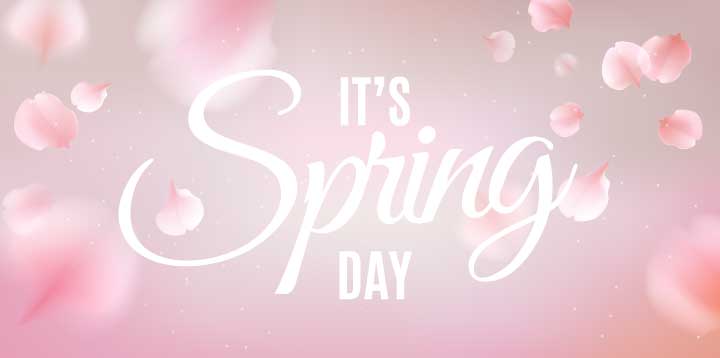The transition from winter to spring is always highly anticipated in Japan. So, to welcome this new season, we take a look at the history, meaning and celebrations of Vernal Equinox Day. Japan’s national holiday, Vernal Equinox Day (Shunbun no Hi, 春分の日), commemorates the sun passing over the equator from the Northern Hemisphere to the Southern Hemisphere. The exact time and date of the sun shifting over the equator varies year-to-year, but this year (2018), the vernal equinox will be at 01:15 JST on Wednesday 21st March, and Vernal Equinox Day (also known as Spring Equinox Day) will also be held on this day.

Many of us are more concerned with the fact that Vernal Equinox Day unofficially indicates the end of the cold dry winter, and the start of sakura (桜, cherry blossom) season – a beautiful time to be in Japan! But what else is Shunbun no Hi about, and why is it celebrated to begin with?
What is an “Equinox”?
The term“equinox”means“equal night”in Latin, and there are two points in every year that it is observed, the second one being the autumn equinox. In Japan, the autumn equinox is also marked with a public holiday,“Autumnal Equinox Day”, or 秋分の日 (Shubun no Hi) in Japanese.
If we put the term “equinox” into context though, we discover that both the spring equinox, and the autumn equinox, are not true to their supposed meaning. Due to light refraction and the geometric centre of the sun, the lengths of day and night are not completely equal. Yet, being close enough, it’s unlikely the names of these events will change any time soon!
How Did the Vernal Equinox Holiday Start?
The first observance of Vernal Equinox Day, also known as Spring Equinox Day, was in 1948, yet, as with many other Japanese holidays, its origins go back much further than that. Prior to WWII, this day was known as Shunki kōreisai, which was connected to Shintoism. Due to the separation of religion from the state, via Japan’s post-war constitution, this holiday had to be repackaged into the non-religious holiday of today.
Are there Traditional Ways to Celebrate?
Shunbun no Hi is actually part of a seven-day celebratory period known as“Haru no Higan” (春の彼岸), of which the term“higan”means“another world”. As you may have guessed, Haru no Higan is a time to pay tributes to the spirits, or more specifically, the spirits of loved ones. There are two higan seasons in Japan, and they both correspond to the dates of the equinoxes. As such, the celebratory practices during the higan periods are very similar. During these times, trips to ancestral family graves are common, as is a popular food known as “bota mochi” (or “ohagi” during the autumn higan). Bota mochi is a chewy ball of sweet rice, frequently used as an offering at shrines, temples and graves across Japan.
How To Commemorate the Vernal Equinox in/around Japan?
In Japan, Vernal Equinox Day is a public holiday – most people will have the day off work. The date can fluctuate depending on time zones and general margin of error, but generally it takes place on the 20th or 21st March in Japan. Because of this, the specific date of the public holiday is announced as late as February of the previous year because of the need for precise astrological measurement. The 2018 Vernal Equinox Day takes place on the 21st, as will the 2019 celebrations.
Although it is now officially a secular holiday, many of the original Shinto traditions still play a big part in how Vernal Equinox Day is celebrated. In the past, the original Shinto holiday was used to venerate and honour past Emperors of Japan. In the present day, Vernal Equinox Day sees families travel to reunite and spend time with each other when they perhaps couldn’t at another time.










